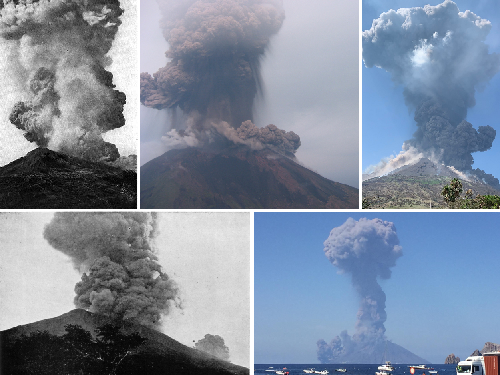Major explosions and paroxysms at Stromboli (Italy): a new historical catalog and temporal models of occurrence with uncertainty quantification

https://doi.org/10.1038/s41598-020-74301-8
https://ingvvulcani.com/2020/10/16/la-memoria-dello-stromboli/
Bevilacqua A., A. Bertagnini, M. Pompilio, P. Landi, P. Del Carlo, A. Di Roberto, W. Aspinall, A. Neri (2020).
Nature – Scientific Reports, 10/17357 , https://doi.org/10.1038
Abstract
Stromboli volcano (Italy), always active with low energy explosive activity, is a very attractive place for visitors, scientists, and inhabitants of the island. Nevertheless, occasional more intense eruptions can present a serious danger. This study focuses on the modeling and estimation of their inter-event time and temporal rate. With this aim we constructed a new historical catalog of major explosions and paroxysms through a detailed review of scientific literature of the last ca. 140 years. The catalog includes the calendar date and phenomena descriptions for 180 explosive events, of which 36 were paroxysms. We evaluated the impact of the main sources of uncertainty affecting the historical catalog. In particular, we categorized as uncertain 45 major explosions that reportedly occurred before 1985 and tested the effect of excluding these events from our analysis. Moreover, after analyzing the entire record in the period [1879, 2020], we separately considered, as sequences, events in [1879, 1960] and in [1985, 2020] because of possible under recording issues in the period [1960, 1985]. Our new models quantify the temporal rate of major explosions and paroxysms as a function of time passed since the last event occurred. Recurrence hazard levels are found to be significantly elevated in the weeks and months following a major explosion or paroxysm, and then gradually decrease over longer periods. Computed hazard functions are also used to illustrate a methodology for estimating order-of-magnitude individual risk of fatality under certain basis conditions. This study represents a first quantitatively formal advance in determining long-term hazard levels at Stromboli.


Devi effettuare l'accesso per postare un commento.